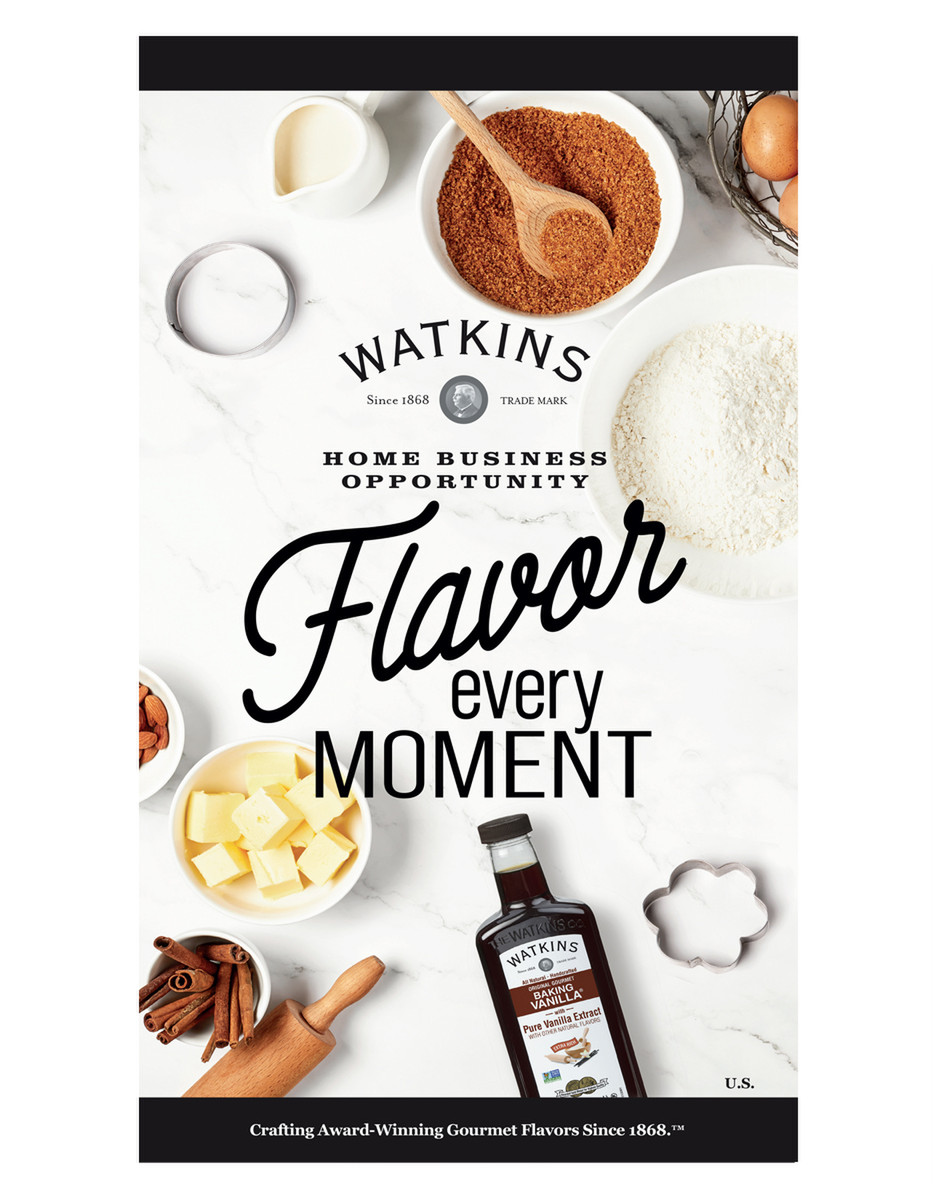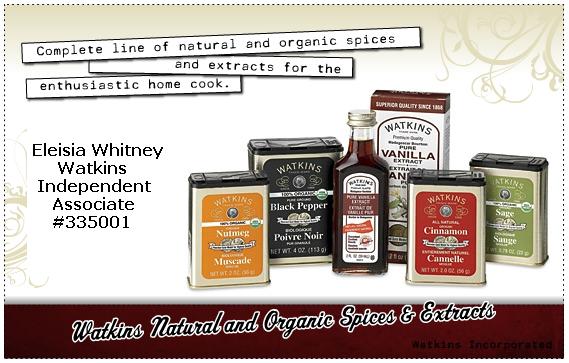Thursday, August 19, 2010
Healthy Eating May Save Your Sight
The right diet can help protect against diseases that affect sight, including age-related macular degeneration (AMD), the leading cause of blindness in those over the age of 55. Researchers at the Agricultural Research Service (ARS)-funded Laboratory for Nutrition and Vision Research have found that the combination of a low glycemic index diet combined with vitamins C and E, zinc, lutein, zeaxanthin, and omega-3 fatty acids can help maintain quality of life and reduce health care costs due to sight-robbing eye diseases.
Macular degeneration (MD) is an eye disorder affecting more than 13 million Americans, and is generally considered to be irreversible. In fact, more people are affected by MD than by glaucoma and cataracts combined. It is the leading cause of blindness in those over the age of 55, with a new case of age-related macular degeneration (AMD) diagnosed every three minutes. (Age-related macular degeneration is a term used for the disorder when it affects people over the age of 60.) The cause of MD is not known, but the condition runs in families, and it likely has a genetic component. It affects an equal number of women and men, but seems to be more common among Caucasians than African-Americans.
Macular degeneration refers to the breakdown of the macula – the central portion of the retina. The function of the retina is to receive visual images, to partially analyze them and transmit the information to the brain. The macula contains the most concentrated collection of light-sensing nerves in the retina and is responsible for producing the most critical aspects of vision. There is a rich supply of blood vessels that carry oxygen and important nutrients to the retina that are required for healthy vision, and disruption of this vasculature can be a contributing factor in MD. The retina has no pain nerve fibers, therefore most diseases that affect the retina do not cause pain.
There are actually two forms of MD. The first, atrophic or dry MD, results from a gradual breakdown and degeneration of critical photoreceptors in the eye that provide night vision and visual acuity. The second, exudative or wet MD, is caused by leaks in the blood vessels of the retina. The bleeding causes scarring and retinal tissue death. About 80 to 85 percent of those with MD have the atrophic form; but most cases of severe vision loss can be attributed to the exudative form. About 10 percent of those with dry MD will also develop the wet form.
Causes and Symptoms
Although there are no definitive answers as to what specifically causes MD, there are a few emerging theories that may help explain what circumstances lead to the problem. Since the macula depends for its healthy functioning on one of the highest rates of blood flow through its blood vessels, anything that interferes with this blood flow can cause the macula to malfunction.
The following dietary or lifestyle choices can reduce the supply of oxygen and vital nutrients to the retina and eventually lead to the death of cells in the retina and macula:
•Smoking can decrease blood supply by causing a narrowing of the blood vessels and a thickening of the blood, much the same as in a heart attack or stroke.
•High saturated-fat diets can cause plaque buildup along blood vessel walls, including the macular vessels, which impedes blood flow.
•A lack of antioxidants, such as vitamin C, vitamin E and lutein may increase the ability of plaque to stick to the blood vessel walls and promote the damage of the tissue.
With macular degeneration there is typically a loss of vision in both eyes. The initial symptom may be a distortion of vision in one eye, causing straight lines to appear wavy. Eventually, loss of central vision worsens, making it difficult to see at long distances, read up close, see faces clearly or distinguish colors. Peripheral vision (what you see out of the corners of your eyes) is not affected.
Recommended Lifestyle Changes
•Don’t smoke and avoid exposure to second-hand smoke.
•Protect your eyes. Be sure to wear sunglasses that contain UV protection.
•Follow a diet that is very low in saturated fat and rich in antioxidants, focusing on vegetables, fruit, and legumes including soy, whole grains and fish.
•Eat antioxidant-rich berries, especially blueberries, frequently.
•Increase your intake of antioxidants such as vitamins C and E, lutein and zinc.
Nutrition and Supplements
Try to choose foods or take supplements that contain vitamin C, vitamin E and lutein, as well as zinc. Vitamin C-rich foods include citrus fruits, melons, tomatoes, potatoes and broccoli. You can get vitamin E from soybeans, greens, fish, wheat germ, nuts and seeds. Dietary sources of zinc are legumes (peas, dried beans, garbanzos/chickpeas, black-eyed peas, lentils and soy products) and whole grains. The carotenoid pigment lutein is found naturally in spinach, kale, collard greens, romaine lettuce and peas. Other protective compounds are the red and purple pigments found in berries and other fruit. Eat berries, especially blueberries, often. You can also get these pigments into your diet with supplements of bilberry, grape seed extract or pine bark extract.
From DrWeil.com
Watkins Eye Care Formula contains vitamins A, C, E, Riboflavin, Selenium, Zinc, Taurine, Citrus Bioflavonoids, Anthocyanosides, Lutein, Zeaxanthin, and Rutin. Read more details about Watkins Eye Care Formula.
Order at my Watkins Online web site.
Macular degeneration (MD) is an eye disorder affecting more than 13 million Americans, and is generally considered to be irreversible. In fact, more people are affected by MD than by glaucoma and cataracts combined. It is the leading cause of blindness in those over the age of 55, with a new case of age-related macular degeneration (AMD) diagnosed every three minutes. (Age-related macular degeneration is a term used for the disorder when it affects people over the age of 60.) The cause of MD is not known, but the condition runs in families, and it likely has a genetic component. It affects an equal number of women and men, but seems to be more common among Caucasians than African-Americans.
Macular degeneration refers to the breakdown of the macula – the central portion of the retina. The function of the retina is to receive visual images, to partially analyze them and transmit the information to the brain. The macula contains the most concentrated collection of light-sensing nerves in the retina and is responsible for producing the most critical aspects of vision. There is a rich supply of blood vessels that carry oxygen and important nutrients to the retina that are required for healthy vision, and disruption of this vasculature can be a contributing factor in MD. The retina has no pain nerve fibers, therefore most diseases that affect the retina do not cause pain.
There are actually two forms of MD. The first, atrophic or dry MD, results from a gradual breakdown and degeneration of critical photoreceptors in the eye that provide night vision and visual acuity. The second, exudative or wet MD, is caused by leaks in the blood vessels of the retina. The bleeding causes scarring and retinal tissue death. About 80 to 85 percent of those with MD have the atrophic form; but most cases of severe vision loss can be attributed to the exudative form. About 10 percent of those with dry MD will also develop the wet form.
Causes and Symptoms
Although there are no definitive answers as to what specifically causes MD, there are a few emerging theories that may help explain what circumstances lead to the problem. Since the macula depends for its healthy functioning on one of the highest rates of blood flow through its blood vessels, anything that interferes with this blood flow can cause the macula to malfunction.
The following dietary or lifestyle choices can reduce the supply of oxygen and vital nutrients to the retina and eventually lead to the death of cells in the retina and macula:
•Smoking can decrease blood supply by causing a narrowing of the blood vessels and a thickening of the blood, much the same as in a heart attack or stroke.
•High saturated-fat diets can cause plaque buildup along blood vessel walls, including the macular vessels, which impedes blood flow.
•A lack of antioxidants, such as vitamin C, vitamin E and lutein may increase the ability of plaque to stick to the blood vessel walls and promote the damage of the tissue.
With macular degeneration there is typically a loss of vision in both eyes. The initial symptom may be a distortion of vision in one eye, causing straight lines to appear wavy. Eventually, loss of central vision worsens, making it difficult to see at long distances, read up close, see faces clearly or distinguish colors. Peripheral vision (what you see out of the corners of your eyes) is not affected.
Recommended Lifestyle Changes
•Don’t smoke and avoid exposure to second-hand smoke.
•Protect your eyes. Be sure to wear sunglasses that contain UV protection.
•Follow a diet that is very low in saturated fat and rich in antioxidants, focusing on vegetables, fruit, and legumes including soy, whole grains and fish.
•Eat antioxidant-rich berries, especially blueberries, frequently.
•Increase your intake of antioxidants such as vitamins C and E, lutein and zinc.
Nutrition and Supplements
Try to choose foods or take supplements that contain vitamin C, vitamin E and lutein, as well as zinc. Vitamin C-rich foods include citrus fruits, melons, tomatoes, potatoes and broccoli. You can get vitamin E from soybeans, greens, fish, wheat germ, nuts and seeds. Dietary sources of zinc are legumes (peas, dried beans, garbanzos/chickpeas, black-eyed peas, lentils and soy products) and whole grains. The carotenoid pigment lutein is found naturally in spinach, kale, collard greens, romaine lettuce and peas. Other protective compounds are the red and purple pigments found in berries and other fruit. Eat berries, especially blueberries, often. You can also get these pigments into your diet with supplements of bilberry, grape seed extract or pine bark extract.
From DrWeil.com
Watkins Eye Care Formula contains vitamins A, C, E, Riboflavin, Selenium, Zinc, Taurine, Citrus Bioflavonoids, Anthocyanosides, Lutein, Zeaxanthin, and Rutin. Read more details about Watkins Eye Care Formula.
Order at my Watkins Online web site.
Thursday, August 05, 2010
Living Naturally - Natural Home Care Products

A report from Packaged Facts says eco-friendly is where the opportunity is, with products offering ideological, practical and functional benefits.
The new study, "Green Household Cleaning Products in the U.S." on dish detergents, bathroom cleaners, general household cleaners, laundry care/detergents, and other products, says that of the $557 million consumers spent last year on green products, $339 million came from green household cleaning products, and $218 million from green laundry products.
While that $557 million is only 3 percent of the total amount that consumers spent last year on the category, Packaged Facts says sales of green cleaners grew 229 percent between 2005 and 2009, more than doubling their footprint in dollar terms and more than tripling their share of the total household cleaner market.
Don Montouri, publisher of Packaged Facts, says, "If the trend continues, sales of green products will reach $2 billion by 2014."
Why are natural home care products important?
- Thirty-seven percent of Americans suffer from chemical sensitivities, skin rashes and allergies — many of them provoked by chemicals in cleaning products.
- Reactions can include eyes watering, breakouts, skin rashes, and coughing or sneezing uncontrollably.
- Asthma is the leading cause of emergency room visits and absenteeism in schools.
- Children breathe faster in proportion to their body weight than adults, making them more vulnerable to chemical exposure.
- Warm baths and showers open pores so that what we have cleaned with is more readily absorbed.
Product Ideas for Back to School
The kids will be going back to school this month. The following Watkins products could be highlighted for "back to school" sales. One of my team members is joining with other direct sales neighbors and friends and planning a multi company Back to School Open House.
1. Use extracts and spices to make nutritious cookies, muffins, and quick breads for lunches and after school snacks. My favorites are Oatmeal Cookies with a little Cinnamon, Banana Bread with Vanilla Extract or Blueberry Muffins with Lemon Extract.
2. Make nutritious healthy after school snacks with Snack and Dip Seasoning Mixes. Mix with low-fat yogurt or low-fat sour cream and serve with veggie dippers and whole grain crackers.
3. Mix Dessert Mixes to make pudding for kids who carry their lunch. Mix pudding and put a serving in a sealed container in their lunch bag.
4. When the weather gets cooler make nutritious soups with soup bases for school lunches.
5. Use Aloe Vera Moisturizing Sunscreen and After Sun Gel to protect from UV rays at sports practices and outdoor school activities.
6. Daily Cleansing Cream and Gentle Pore Scrub help keep teen skin clean and blemish free.
7. Lip Tints and Lip Balms moisturize, protect, and heal dry lips.
8. Use Peppermint Foot Cream to revive and moisturize feet after sports and outdoor activities.
9. Keep a container of All Purpose Wipes in the car for car pool clean-ups.
10. Use Petro Carbo First Aid Salve for playground and sports cuts and scrapes - one for the medicine chest and pocket size for purse or gym bag. (Not sure if kids could keep a small tin with them but mom and dad could.)
11. Children's Chewable Vitamin for optimal physical and mental development.
12. Superfood Multiple Vitamin for older children and adults.
13. Immunergy and Rezist Plus for adults to keep immune system strong and fight off colds and flu as the school year progresses. Rezist Plus also helps with fall allergies.
Eleisia
http://www.everydaynecessities.com/
Back to School Marketing Ideas
2. Make nutritious healthy after school snacks with Snack and Dip Seasoning Mixes. Mix with low-fat yogurt or low-fat sour cream and serve with veggie dippers and whole grain crackers.
3. Mix Dessert Mixes to make pudding for kids who carry their lunch. Mix pudding and put a serving in a sealed container in their lunch bag.
4. When the weather gets cooler make nutritious soups with soup bases for school lunches.
5. Use Aloe Vera Moisturizing Sunscreen and After Sun Gel to protect from UV rays at sports practices and outdoor school activities.
6. Daily Cleansing Cream and Gentle Pore Scrub help keep teen skin clean and blemish free.
7. Lip Tints and Lip Balms moisturize, protect, and heal dry lips.
8. Use Peppermint Foot Cream to revive and moisturize feet after sports and outdoor activities.
9. Keep a container of All Purpose Wipes in the car for car pool clean-ups.
10. Use Petro Carbo First Aid Salve for playground and sports cuts and scrapes - one for the medicine chest and pocket size for purse or gym bag. (Not sure if kids could keep a small tin with them but mom and dad could.)
11. Children's Chewable Vitamin for optimal physical and mental development.
12. Superfood Multiple Vitamin for older children and adults.
13. Immunergy and Rezist Plus for adults to keep immune system strong and fight off colds and flu as the school year progresses. Rezist Plus also helps with fall allergies.
Eleisia
http://www.everydaynecessities.com/
Labels:
back to school
,
product marketing ideas
,
watkins products
Tuesday, August 03, 2010
Jerk Chicken Breasts
1/3 cup apple cider vinegar
1/2 cup molasses
1–2 Tablespoons hot sauce, or more to taste
2 teaspoons ground allspice
2 teaspoons Watkins Onion Flakes or Watkins Organic Onion Powder
2 teaspoons Watkins Organic Garlic Powder
2 teaspoons Watkins Ground Cinnamon
4 large chicken breasts, 8 to 10 ounces each
Salt and Watkins Granulated Black Pepper, to taste
2 scallions, white and green parts, chopped
2 limes, cut into wedges
In a small bowl, mix together the vinegar, molasses, hot sauce, allspice, onions (or onion powder), garlic powder and cinnamon.
Place the chicken breasts in a gallon-sized Ziploc Bag, pour the mixture over the chicken until thoroughly coated and seal the bag. Place the bag in the refrigerator and marinate for several hours.
Preheat the oven to 375 degrees F. Remove the chicken breasts from the marinade and place the chicken on a plate. Sprinkle the chicken breasts with salt and pepper (on one or both sides, according to taste).
Spray a baking pan with Watkins Cooking Spray. Place the chicken in the pan and spray the surface of the chicken lightly with the cooking spray. Roast the chicken in the oven for 15 to 20 minutes or until the chicken is cooked through and firm to the touch.
Once done, arrange the chicken on a serving platter with corn on the cob as a side dish. Sprinkle with the chopped scallions and garnish the platter with the lime wedges.
Tips
To cook the chicken on an outdoor grill, heat the grill to medium-high heat. Place the marinated chicken on the grill and cook for 10 to 15 minutes (5 to 8 minutes on each side), turning the chicken once, until the chicken is cooked through and firm to the touch.
Whether you cook this recipe on the grill or in the oven, the cooked chicken's temperature should be 165 degrees F when measured with a meat thermometer.
Eleisia
http://www.watkinsonline.com/eleisiawhitney
1/2 cup molasses
1–2 Tablespoons hot sauce, or more to taste
2 teaspoons ground allspice
2 teaspoons Watkins Onion Flakes or Watkins Organic Onion Powder
2 teaspoons Watkins Organic Garlic Powder
2 teaspoons Watkins Ground Cinnamon
4 large chicken breasts, 8 to 10 ounces each
Salt and Watkins Granulated Black Pepper, to taste
2 scallions, white and green parts, chopped
2 limes, cut into wedges
In a small bowl, mix together the vinegar, molasses, hot sauce, allspice, onions (or onion powder), garlic powder and cinnamon.
Place the chicken breasts in a gallon-sized Ziploc Bag, pour the mixture over the chicken until thoroughly coated and seal the bag. Place the bag in the refrigerator and marinate for several hours.
Preheat the oven to 375 degrees F. Remove the chicken breasts from the marinade and place the chicken on a plate. Sprinkle the chicken breasts with salt and pepper (on one or both sides, according to taste).
Spray a baking pan with Watkins Cooking Spray. Place the chicken in the pan and spray the surface of the chicken lightly with the cooking spray. Roast the chicken in the oven for 15 to 20 minutes or until the chicken is cooked through and firm to the touch.
Once done, arrange the chicken on a serving platter with corn on the cob as a side dish. Sprinkle with the chopped scallions and garnish the platter with the lime wedges.
Tips
To cook the chicken on an outdoor grill, heat the grill to medium-high heat. Place the marinated chicken on the grill and cook for 10 to 15 minutes (5 to 8 minutes on each side), turning the chicken once, until the chicken is cooked through and firm to the touch.
Whether you cook this recipe on the grill or in the oven, the cooked chicken's temperature should be 165 degrees F when measured with a meat thermometer.
Eleisia
http://www.watkinsonline.com/eleisiawhitney
Labels:
Jerk Chicken
,
watkins products
,
Watkins spices
Subscribe to:
Posts
(
Atom
)












